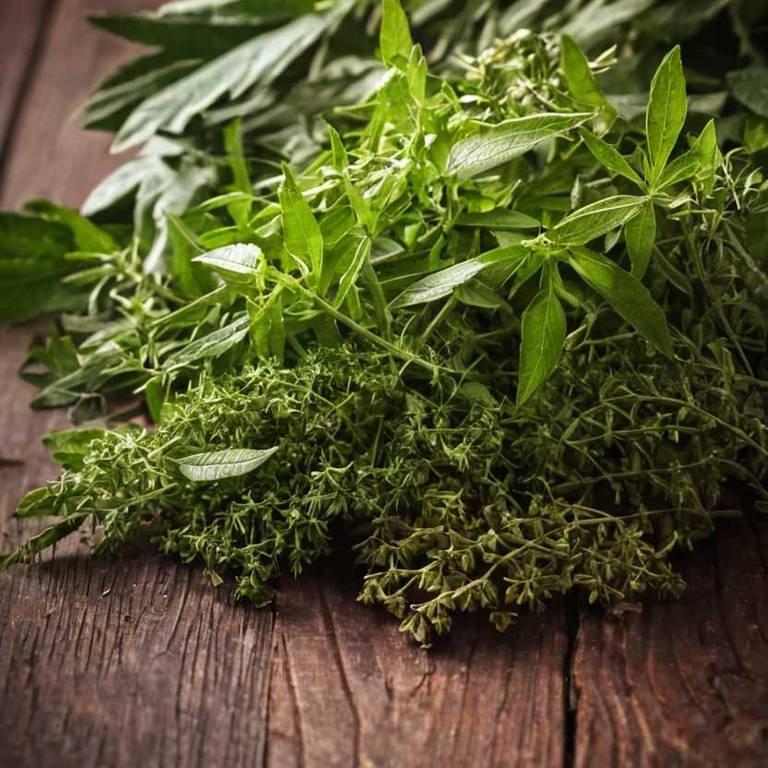By Leen Randell
Updated: Jul 06, 2024
What to know about Rhus chinensis (chinese sumac) before using it medicinally

Rhus chinensis, commonly known as Chinese sumac, is a herb that has been valued for its rich array of health-giving properties, including its anti-inflammatory, antioxidant, and antibacterial properties, which are believed to improve overall health and wellbeing.
A low-maintenance and versatile herb, Rhus chinensis is often used in traditional medicine and is also prized for its ornamental value in gardens and landscapes. From a botanical perspective, Rhus chinensis is a deciduous shrub belonging to the Anacardiaceae family, characterized by its small white flowers and distinctive red berries.
Historically, the herb has been used in traditional Chinese medicine for centuries, with records of its use dating back to the Shang Dynasty.
This article explains the medicinal, horticultural, botanical, and historical aspects of Rhus chinensis.
What are the medicinal properties of Rhus chinensis?
Rhus chinensis, also known as Chinese sumac, helps with treating various health conditions, including fever, rheumatism, and skin disorders. Its medicinal properties include anti-inflammatory, antibacterial, and antifungal activities.
The active constituents of Rhus chinensis include flavonoids, terpenoids, and tannins, which are responsible for its medicinal properties. These compounds have been shown to possess antioxidant, anti-inflammatory, and antimicrobial activities.
The parts of the plant most used for medicinal purposes are the leaves, roots, and fruits. The leaves are used to treat fever, rheumatism, and skin disorders, while the roots are used to treat digestive issues and the fruits are used to treat respiratory problems.
Prolonged use of Rhus chinensis can cause side effects, including gastrointestinal upset, dizziness, and allergic reactions. Improper use can also lead to interactions with other medications, such as blood thinners and diabetes medications.
Precautions should be taken when using Rhus chinensis medicinally, including consulting with a healthcare professional, especially for pregnant or breastfeeding women. Additionally, proper identification and authentication of the plant are crucial to avoid confusion with other toxic plants.
What are the horticulural aspects of Rhus chinensis?
Rhus chinensis, also known as Chinese Sumac, grow well in full sun to partial shade and require well-drained soil with a pH range of 6.0-7.0. They thrive in areas with moderate temperatures, between 35-50°C, and annual rainfall of 600-1200 mm.
Planting tips for Chinese Sumac include choosing a location with good air circulation, as this helps prevent fungal diseases. Dig a hole twice as wide and as deep as the root ball, and backfill with a mix of soil and compost. Water regularly, but avoid overwatering, which can lead to root rot.
Harvesting Chinese Sumac typically occurs from late spring to early summer, when the leaves and fruits are fully developed. Pinch or prune the stems to promote bushy growth and encourage fruiting. Harvest the fruits when they are red or purple, as they are ripe and ready for use.
Common pests of Chinese Sumac include scale insects, mealybugs, and spider mites. Fungal diseases such as leaf spot and powdery mildew also affect the plant, particularly when it is grown in humid or poorly ventilated conditions. Regular monitoring and management practices can help prevent these issues from becoming severe.
What are the botanical aspects of Rhus chinensis?
Rhus chinensis, also known as Chinese sumac, is a deciduous shrub or small tree that grows up to 10 meters in height. Its branches are grayish-brown, and its leaves are alternate, with 3-5 lobes and a leathery texture. The leaves are 5-12 cm long and have a pointed apex.
Rhus chinensis belongs to the family Anacardiaceae and is classified as Rhus chinensis Mill. in the botanical nomenclature. It is a member of the genus Rhus, which comprises approximately 250 species, and the species is native to Asia.
Variants of Rhus chinensis include Rhus chinensis var. tomentosa and Rhus chinensis var. sinica. These variants differ from the species in minor characteristics such as leaf size, hair density, and growth habits.
Rhus chinensis is native to eastern Asia, including China, Japan, and Korea. It has been naturalized in parts of North America, particularly in the United States. The plant thrives in well-drained soils and a subtropical climate.
The life cycle of Rhus chinensis begins with germination, which typically occurs in spring. The plant grows rapidly during the summer months and produces small, yellowish-green flowers. These flowers develop into drupes, which are 1-2 cm long and contain a single seed. The plant typically produces multiple seeds per year.
What are the historical aspects of Rhus chinensis?
Rhus chinensis, also known as Chinese sumac, is a plant with a long history of use in traditional Chinese medicine, dating back to the Han Dynasty (206 BCE - 220 CE). Its bark and roots were used to treat fever, rheumatism, and digestive issues.
In Chinese mythology, Rhus chinensis is associated with the Eight Trigrams of the I Ching, representing the element of fire and the concept of transformation. The plant is also linked to the legend of the Eight Immortals, who used its extracts to achieve immortality.
Rhus chinensis has been imbued with symbolic meanings across cultures, representing vitality, protection, and purification. In Chinese culture, it is associated with the east, the direction of sunrise, and the season of spring. Its branches and leaves are used in traditional Chinese rituals to ward off evil spirits.
Historical texts, such as the Shennong Bencaojing (Divine Farmer's Herb-Root Classic, 270 CE) and the Bencao Gangmu (Compendium of Materia Medica, 1596 CE), document the medicinal properties and uses of Rhus chinensis. These texts describe its applications in treating various ailments and its potential for toxicity when consumed in excess.
Archaeological discoveries have revealed the presence of Rhus chinensis in ancient Chinese artifacts, including pottery, ceramics, and lacquerware. The plant's extracts were used to decorate and preserve these objects, showcasing its significance in ancient Chinese art and culture.